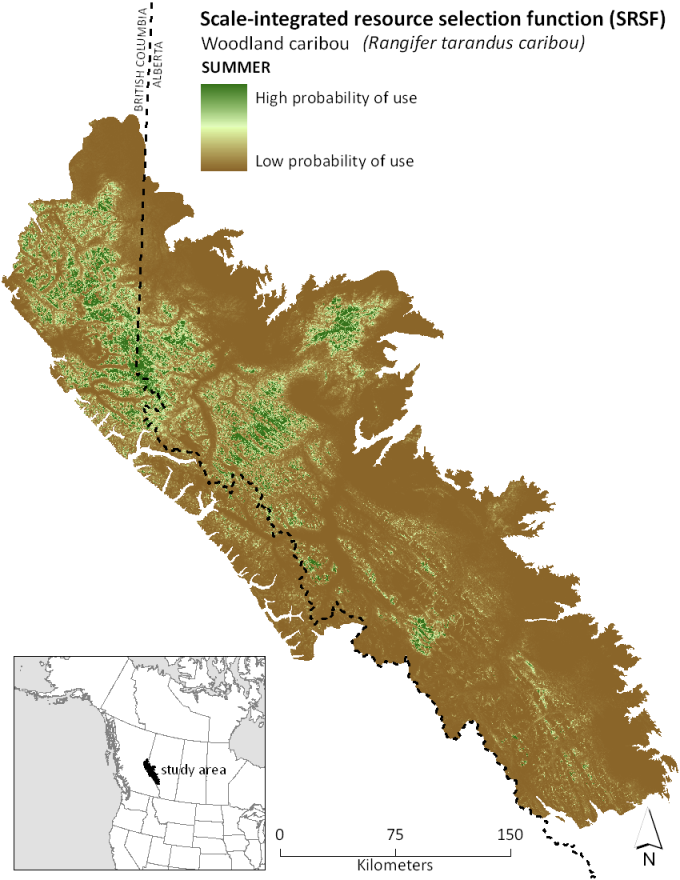Ecological Archives A022-060-A6
Nicholas J. DeCesare, Mark Hebblewhite, Fiona Schmiegelow, David Hervieux, Gregory J. McDermid, Lalenia Neufeld, Mark Bradley, Jesse Whittington, Kirby G. Smith, Luigi E. Morgantini, Matthew Wheatley, and Marco Musiani. 2012. Transcending scale dependence in identifying habitat with resource selection functions. Ecological Applications 22:1068–1083.
Appendix F. Inverse proximity-weighted, among-population average scale-integrated resource selection functions (SRSFs).
We estimated a weighted average SRSF across population-level SRSFs using the proximity of each pixel to population home ranges as a means of weighting. Areas within population home ranges were predicted solely with that population's SRSF and for areas outside of population home ranges we estimated the inverse of the distance of each pixel to each population seasonal home range. At each pixel we then divided each population's inverse distance by the sum across all inverse distances to estimate per-population weights such that the sum of all weights was equal to 1.0.
We used the global models, including the effects of natural and anthropogenic disturbance variables for this averaging, so the maps below and within the manuscript reflect the influence of all variables upon caribou resource selection. The means of categorizing or coloring RSFs during plotting can greatly affect their visual interpretation without necessarily changing the underlying predicted values. For plots in this manuscript we used the default standard deviation-based "stretch" symbology in ArcGIS 9.3 to color RSFs continuously from low to high predicted values, but this may or may not reflect the most biologically meaningful gradient in habitat suitability across the study area.

Fig. F1. Summer inverse proximity-weighted, among-population average scale-integrated resource selection function (SRSF) summarizing summer woodland caribou resource selection across three scales of selection and nine populations in west-central Alberta and eastern British Columbia, 1998–2009.